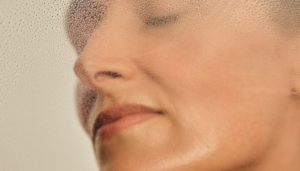Our DNA’s integrity and stability is constantly challenged by numerous external and internal factors.
These challenges give rise to the accumulation of damage throughout our lives, affecting the DNA inside the cell’s nucleus, known as “nuclear DNA,” and the DNA present in the cell’s mitochondria, referred to as “mtDNA.”
External factors include chemical, physical, and biological agents:
- Ultraviolet (UV) radiation from sunlight (or artificial sources, such as tanning beds).
- Radiation exposure from sources like X-rays (typically medical and dental), gamma rays (background radiation from radioactive materials in the Earth’s crust), and cosmic rays (particularly for those who live at higher altitudes, live near the Earth’s poles or frequently engage in air travel).
- Medications (certain immunosuppressants, chemotherapy, nonsteroidal anti-inflammatories, antibiotics, NSAIDs, and antipsychotic drugs.
- Viral infections, such as human papillomavirus (HPV) and hepatitis B and C.
- Environmental pollutants, including air (with chemicals such as polycyclic aromatic hydrocarbons and volatile organic compounds), water (with heavy metals, pesticides, and industrial chemicals), chemicals in food and beverages (food additives and preservatives), and tobacco smoke.
Internal factors include:
- DNA replication errors (mistakes that can occur when DNA is being copied during cell division).
- Chromosome segregation defects (errors that can occur during the process of distributing chromosomes to daughter cells during cell division).
- Oxidative processes (normal metabolic processes that occur within cells generate highly reactive molecules that can damage DNA).
- Spontaneous hydrolytic reactions (the presence of water molecules in the cellular environment can lead to the formation of sites in the DNA strand where a nucleotide is missing).
Despite a complex network of DNA repair mechanisms, damage to our DNA accelerates as we age because the efficiency of these mechanisms decreases.
The damage, referred to as “genetic lesions” (abnormalities or changes in the DNA), is highly diverse. For example, the Hepatitis B virus has a DNA genome that can integrate into our cell’s DNA, and disrupt the normal function of our genes involved in cell growth and division, potentially leading to the development of liver cancer.
Or for example, one of many popular volatile organic compounds (VOCs) found in household products is acetone. Acetone is a common solvent and is one of the most common nail polish removers. Exposure to high levels of acetone can cause oxidative stress.

Oxidative stress is a type of damage that occurs when there is an imbalance between the production of highly reactive molecules called free radicals and the body’s ability to neutralize them. Free radicals contain an unpaired electron, making them highly reactive and able to damage other molecules in the body, including proteins, lipids, and DNA.
Oxidative stress can cause a range of genetic lesions, including single-strand breaks, double-strand breaks, and modifications to the DNA bases. These lesions can lead to mutations in the affected genes, potentially leading to the development of cancer or other diseases.
Research has demonstrated that organisms with longer lifespans have evolved to have more effective mechanisms for repairing their DNA than organisms with shorter lifespans.
For example, the difference in how well different species can repair their DNA may be significantly influenced by sirtuin-6 (SIRT6)[1]. Experiments in mice have shown overexpression of SIRT6, promotes genomic stability, improves double-strand break repair, and extends lifespan[2].

Sirtuins are a class of proteins that play important roles in various cellular processes such as metabolism, DNA repair, and gene expression. They regulate cellular responses to stress, aging, and calorie restriction and are therefore considered to be potential targets for interventions (e.g., longevity supplements) that can extend lifespan and improve healthspan. Sirtuins are named after the gene SIR2 (silent information regulator 2) in yeast, which was the first sirtuin to be identified. In humans, there are seven sirtuin proteins (SIRT1-SIRT7), each with different functions.
Sirtuins have been the subject of significant research in recent years due to their potential role in promoting healthy ageing. Modulating sirtuin activity is a promising strategy for promoting healthy ageing and reducing the risk of age-related diseases.
Telomere Attrition
As we age, DNA damage accumulates randomly throughout the genome. However, certain regions of chromosomes, like the chromosome ends (telomeres), are prone to predictable deterioration and contribu…
References









